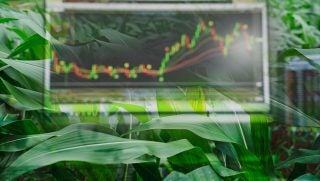A University of Georgia food scientist has taken days off the process of identifying foodborne pathogens such as Listeria and Salmonella through a computer software program.
The newest addition to the UGA Center for Food Safety (CFS) in Griffin, Georgia, Henk den Bakker is one of the pioneering researchers in the field of food safety bioinformatics.
“I’m working on software packages that use graphs to show relationships between bacterial genomics in a population,” said den Bakker, who came to the UGA College of Agricultural and Environmental Sciences from Texas Tech University. “Graphs are used to find genomic differences between strains of foodborne bacteria. By studying graphs of complete populations of a pathogen, we can look for genetic variation in genomes that help us to fingerprint bacterial strains. This makes it easier to find bacteria with a similar genomic fingerprint, for instance, bacteria involved in a disease outbreak.”
For the average American, this means that scientists can detect the source of an outbreak of foodborne illness quicker. The sooner the source is found, the sooner the outbreak can be stopped.
At UGA, den Bakker will continue an ongoing collaboration with UGA CFS researcher Xiangyu Deng and Lee Katz, a bioinformatician at the Centers for Disease Control and Prevention. Together, den Bakker, Deng and Katz formed the UGA Food Safety Informatics Group.
“We are able to analyze really large chunks of data in a matter of hours using the data Dr. Deng has collected through SeqSero and the software program I created,” he said. “We recently analyzed 390 Salmonella genomes in about 4 hours; this normally takes scientists days to do. And, we can now add new genomes to the dataset and rerun the data in just 20 minutes.”
The publicly accessible National Center for Biotechnology Information Sequence Read Archive database currently includes genomic information for more than 70,000 genomes, what den Bakker calls a “ginormous chunk of data.” The cloud-based SeqSero software tool quickly classifies strains of Salmonella, one of the most prevalent foodborne pathogens in the world. It identifies serotypes, or individual, distinct strains, of Salmonella using whole genome sequencing (WGS).
Developed by UGA College of Agricultural and Environmental Sciences food science graduate student Shaokang Zhang, the website is used by public health officials and scientists across the globe. After researchers upload sequence files, the system sends an analysis in minutes — 24 hours a day, seven days a week, at no charge.
Deng compared the system to a detective investigating a crime.
“For investigation and surveillance purposes, you need to be able to profile your suspects at different levels, from general demographics to fingerprints. If your suspects are Salmonella, serotype determination, or serotyping, is the first step of your profiling,” he said. “It’s now possible to do all the profiling with whole genome sequencing, and it saves a lot of time and (steps in) workflow.”
In addition to working with Deng on the database/software project, den Bakker will conduct research into bacterial epidemiology, genomics epidemiology and the genomics of spoilage organisms.
By studying the genomics of foodborne pathogens in nature, den Bakker says scientists can better understand how they grow and multiply.
“There are strains of Listeria that haven’t changed in decades. Knowing how this happens is essential to help genomic epidemiology,” said den Bakker.


